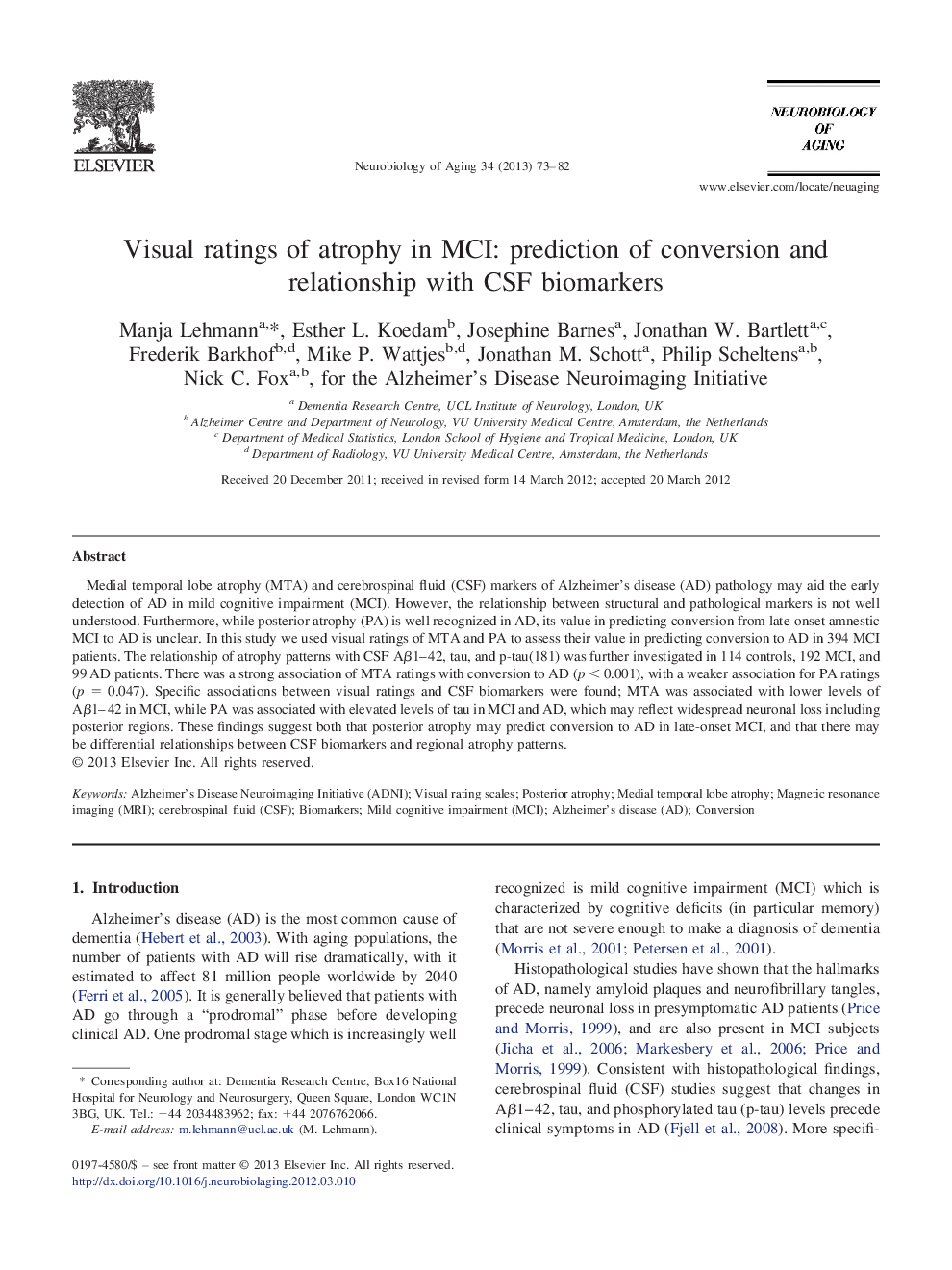| Article ID | Journal | Published Year | Pages | File Type |
|---|---|---|---|---|
| 6807874 | Neurobiology of Aging | 2013 | 10 Pages |
Abstract
Medial temporal lobe atrophy (MTA) and cerebrospinal fluid (CSF) markers of Alzheimer's disease (AD) pathology may aid the early detection of AD in mild cognitive impairment (MCI). However, the relationship between structural and pathological markers is not well understood. Furthermore, while posterior atrophy (PA) is well recognized in AD, its value in predicting conversion from late-onset amnestic MCI to AD is unclear. In this study we used visual ratings of MTA and PA to assess their value in predicting conversion to AD in 394 MCI patients. The relationship of atrophy patterns with CSF Aβ1-42, tau, and p-tau(181) was further investigated in 114 controls, 192 MCI, and 99 AD patients. There was a strong association of MTA ratings with conversion to AD (p < 0.001), with a weaker association for PA ratings (p = 0.047). Specific associations between visual ratings and CSF biomarkers were found; MTA was associated with lower levels of Aβ1-42 in MCI, while PA was associated with elevated levels of tau in MCI and AD, which may reflect widespread neuronal loss including posterior regions. These findings suggest both that posterior atrophy may predict conversion to AD in late-onset MCI, and that there may be differential relationships between CSF biomarkers and regional atrophy patterns.
Keywords
Related Topics
Life Sciences
Biochemistry, Genetics and Molecular Biology
Ageing
Authors
Manja Lehmann, Esther L. Koedam, Josephine Barnes, Jonathan W. Bartlett, Frederik Barkhof, Mike P. Wattjes, Jonathan M. Schott, Philip Scheltens, Nick C. Fox, Alzheimer's Disease Neuroimaging Initiative Alzheimer's Disease Neuroimaging Initiative,
